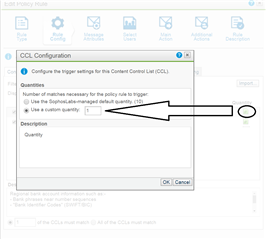Is anyone else experiencing issues with Data Control policies not working ? During an external audit, we discovered both ssn and credit card numbers were able to bypass the policies we had set in place. These policies had worked before. Now, I get to pull all emails matching the polices via Exchange. We have bank account policies that we will test next. We called Sophos, and they are going to investigate.
| Software engine | v4.5.0.1 |
| Threat definitions | 558000.0.20190222.156 |
This thread was automatically locked due to age.



